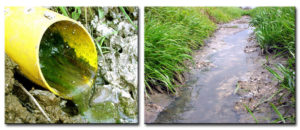And now back to some specifics concerning our flattened friends. As with many tortoises, male combat often precedes mating, and seems to spur reproductive success in captivity. Unlike most tortoises, male pancakes get along fairly well in general, but should be watched when one shows interest in breeding. A bit of fighting should be allowed, but battling males should be separated when you are not present, just to be safe.
Females lay a single large, elongated egg per clutch (rarely 2) and may produce 3-4 clutches per year. Adults tortoises provided with a varied diet need vitamin /mineral supplementation only once each week in most cases, but during the breeding season supplements should be added to the females’ salad at each feeding (calcium is particularly important at this time). Be sure also that your UVB bulbs have been replaced within the time limits set by the manufacturer, so that your pets can utilize their dietary calcium. Mating occurs most often in January and February, and the eggs are deposited in July and August, but such can occur throughout the year in captivity. Incubation may take up to 300 days (range 99-300 days). The hatchlings average 1.6 inches in length, and, in contrast to the adults, have domed shells.
Pancake tortoises often deposit eggs right on the surface, or within shelters, so check frequently lest they be crushed by the female or other animals. None-the-less, it is important that you provide appropriate laying sites, as some tortoises may retain eggs, or become stressed, if unable to find a good laying site. A container of slightly moist sand covered by a domed shelter (i.e. cork bark), often does the trick. Some keepers have noticed that gravid (those with developing eggs) females tend to climb into flower pots and other elevated sites at egg laying time – perhaps in the wild they seek higher ground?
Handle any eggs that you discover gently and bear in mind that oil from your skin can clog egg pores – powder free latex gloves are a good idea. The eggs should not be turned when they are moved, and should be re-positioned in the incubator in the same position as they were found. A commercial reptile egg incubator is the way to go when seeking to hatch tortoise eggs. A mix of vermiculite to water at a ratio of 1:1 by weight is the standard, although some success has been had with a ratio of 1:3. To obtain a 1:1 mix, first weigh the vermiculite in grams and note this figure. For the water, you will need a graduated cylinder or measuring cup that is marked off in milliliters. Since 1 milliliter of water weighs 1 gram, the computation is easy (even for one so mathematically challenged as I!) – if you are using 50 grams of vermiculite, add to it 50 ml. of water.
The substrate should be placed within a small Tupperware or similar container and the eggs half-buried into the substrate. Weigh the container, with substrate and eggs inside, and note this figure on the container’s lid. Re-weigh once each week – any drop in weight is the result of evaporation, and should be made up by adding the appropriate amount of water (i.e. if the container weighs 1 gram less, add 1 ml. of water). In the past I have used unventilated containers (opening each day to oxygenate) with some success, but the current trend is to perforate the container to allow for more gas exchange. I would agree – especially as the eggs mature and the embryos require more oxygen – just remember to watch for water loss.
Incubation temperatures of 86-89 F have worked for myself and others in hatching pancake tortoise eggs. As with those tortoise species that have been studied thus far, the sex of the hatchling is likely temperature dependent. In general, cooler temperatures produce more male tortoise hatchlings, while higher temperatures favor the development of females (the same rules do not apply to other reptiles). There is also a range at which both sexes will be produced, more or less in equal amounts, but I do not believe the exact limits of this range have been established for pancake tortoises. This is an area where pet owners can contribute greatly, so please be sure to write in with your discoveries.
There is some evidence that decreasing substrate moisture levels spur hatching, and that a nightly drop in incubation temperature (to 77 F) increases hatching success – further experimentation in this area is needed. Again, anything that you can learn will be of immense help to those interested in keeping and conserving this fantastic tortoise.
The details of 1 person’s success in breeding this species are given at:
http://www.tortoisetrust.org/articles/pancake.htm
 That Reptile Blog – Reptile, Amphibian and Exotic Pet Care and Information
That Reptile Blog – Reptile, Amphibian and Exotic Pet Care and Information







